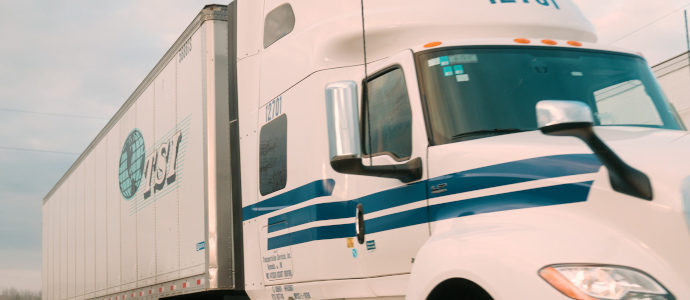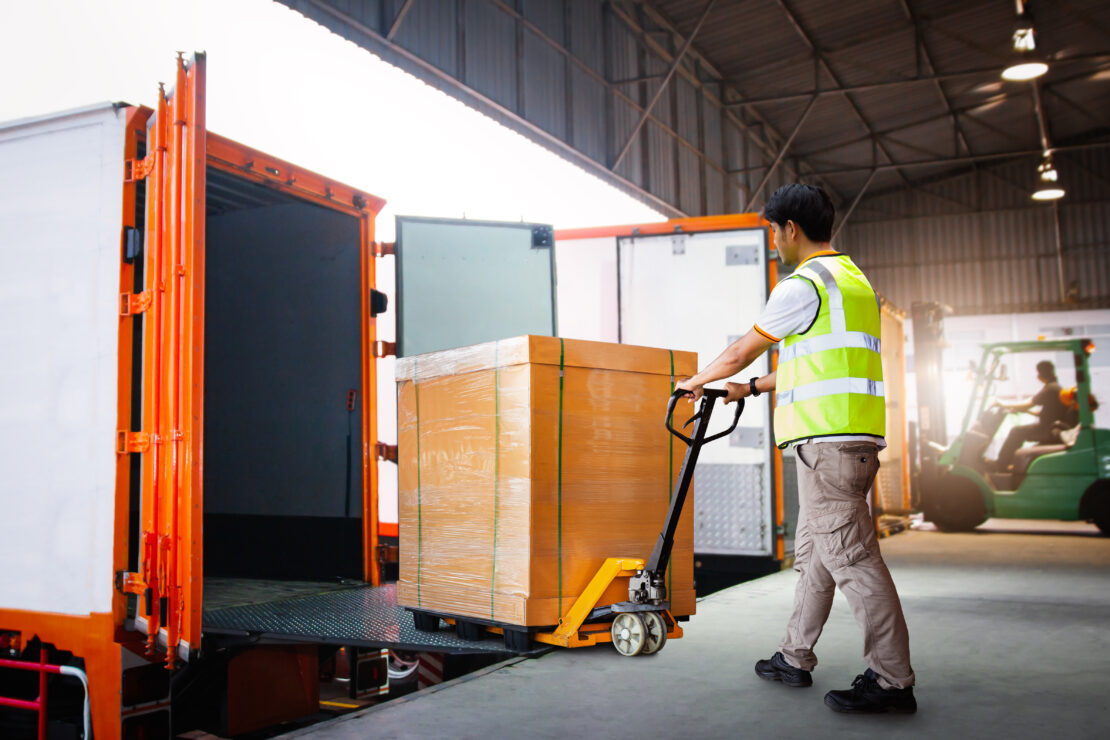
A Comprehensive Guide to Domestic Freight Shipping
Domestic freight shipping is a supply chain management and transportation process where finished goods are delivered within a country’s borders. Domestic freight can be shipped by rail, truck, plane, and, in some cases, via ocean.
One of the most common domestic freight shipping methods is trucking, which uses semi-trucks. There are many benefits of using trucks to ship domestic freight. Trucks can reach remote and rural areas whether other modes of transportation, like rail or air, may be unavailable. Trucks also make door-to-door deliveries possible. Lastly, domestic freight trucking is typically faster than other shipping methods and can be easily rerouted based on unforeseen circumstances, like accidents or inclement weather.
In this article, we’ll specifically cover everything you need to know about domestic freight trucking, including shipping options, how the shipping process works, and how to calculate freight pricing.
Domestic Freight Trucking Options
Companies have several domestic freight trucking options to choose from, including less-than-truckload, full truckload, partial truckload, expedited, and intermodal. Understanding the advantages and disadvantages will help you save money and prevent delays.
Less-Than-Truckload
A less-than-truckload (LTL) shipment means the freight occupies less than a full truckload. LTL shipments are ideal when your pallet of products or materials weighs more than 150 pounds but less than 15,000 pounds.
Multiple small pallets from different companies are combined within an LTL shipment so that everyone can benefit from the combined weight. Companies that use LTL shipment won’t have to wait to fill up an entire truckload, so they can send shipments more frequently if needed. While LTL shipments are not always suited for time-critical deliveries, the best freight shipping companies have well-established routes to ensure maximum occupancy and reduce transportation costs.
Advantages:
- Ideal for Small Shipments
- Allows for Frequent Shipments
Disadvantages:
- Not Suited for Time-Critical Deliveries
- Not Suited for Large or Heavy Shipments
Full Truckload
A full truckload (FTL) shipment is where your shipment occupies all the space within the trailer. These types of shipments are commonly used when companies need to deliver a large volume of products.
The benefit of FLT shipping is that deliveries are faster, the costs per unit shipped are lower, and you’re not forced to share the container with other companies. Another benefit is that your shipment is handled less frequently than multiple LTL shipments that must be loaded and unloaded at different stops.
Advantages:
- Good for Large or Heavy Shipments
- Less Handling
- Lower Costs Per Unit
- Faster Deliveries
Disadvantages:
- Higher Overhead Cost
- More Planning Involved
- Harder to Book During the Holiday Seasons
- Longer Lead Times/More Infrequent Shipments
Partial Truckload
Partial truckload shipments (PTL) fall between LTL and FTL shipments. With PTL, the shipment is larger than a typical LTL but not large enough to qualify for an FTL shipment. The shipment occupies a larger space than LTL, allowing the carrier to fill the remaining container space with other parcels or pallets from other companies.
PTL shipments are less expensive than FTL shipments because companies are not paying for the full trailer. They are also a more economical choice when compared to LTL shipments as they have a lower per-unit freight cost due to the larger volume of products/materials being shipped.
Advantages:
- Good for Medium-to-Large Volume Orders
- Lower Per-Unit Cost Compared to LTL
- Faster Shipping Times Compared to LTL
- Fewer Stops
Disadvantages:
- PTL Is Not Always a Carrier Option
- Not Good for Small Shipments
- Price Fluctuations
Expedited
Expedited freight is used explicitly for time-critical shipments (usually same-day or next-day shipping). In terms of trucking, it’s not uncommon for LTL shipments or PTL shipments to have a high-priority, urgent service attached where the shipment travels non-stop to its final destination. While the costs are higher, the shipment does arrive faster.
Intermodal
Intermodal means that more than one shipping method is being used. In this situation, “shipping method” refers to how the shipment is being shipped (air, rail, truck, etc.). Depending on your shipment and its destination, a combination of two or more shipping methods might be used. This could include using cargo ships, rail freight, and trucking together. An example might involve loading your cargo into intermodal containers that can easily be transferred from a cargo ship to a train onto a semi-truck.
The primary advantage of intermodal shipping is its cost savings, especially when items are being shipped from coast to coast or over long distances or when fuel costs are particularly high. Businesses interested in reducing their carbon footprint should also consider intermodal shipping.
How the Shipping Process Works

During domestic freight shipping, the first step is determining which transport type is needed. To do this, you’ll need to consider the number of pallets you’re shipping, their total weight, and the final destination. These factors will help you understand whether you need LTL, FTL, PTL, or intermodal.
If you’re shipping a hefty bulk order that can potentially take up a full truckload, you’ll need to choose FTL. If you’re shipping smaller orders, you can opt for LTL or PTL, depending on how much you’re shipping and the deadline you’re working with. If you’re working on a tight deadline and need items shipped within 48 hours, you’ll need to expedite your shipment. Lastly, if you’re shipping your items over a long distance and other transportation modes are available, you may want to choose intermodal.
Next, you need to package and label your shipment properly. Special care must be taken to ensure your shipment is adequately secured so that no damage occurs during loading, transit, and unloading. Afterward, you need to ensure you have the following documentation:
- Bill of Lading: This is a document provided by the freight carrier that outlines the contents of the cargo (products/goods), where they are going (destination), who will receive them (consignee), and other critical freight information.
- Packing List: The packing list details the contents of each box, carton, or pallet. It itemizes each product’s weight, the shipment’s total weight, and its dimensions.
Depending upon your freight method, your shipment may need to be loaded, transported, and unloaded several times before it reaches its destination. This is especially the case with LTL shipments.
One mistake during the shipping process can lead to damaged freight, unending delays, and, most importantly, upset customers. If you frequently ship goods, working with a transportation and logistics provider is critical. An experienced logistics professional can help you determine which shipping option is more cost-effective for your situation and handle the entire shipping process from start to finish.
Understanding Freight Shipping Rates
The following factors will influence your shipping rate:
- Shipment Weight, Dimensions, & Density: Price increases as the dimensional weight, actual weight, and freight density increase. Freight density is the actual weight of the item divided by the dimensional weight of the shipment.
- Total Distance Traveled: Price will increase as the distance increases.
- Delivery Deadline/Timeline: The shorter the deadline is, the more expensive the cost will be.
- Fuel Costs: This factor can be hard to predict but fluctuates monthly. When fuel prices are high, shipping rates may increase to cover the additional cost.
- Special Handling & Unloading Requests: Additional services like inside delivery, liftgate service, and special handling requirements for fragile or dangerous goods can increase shipping costs.
- Type of Goods Being Shipped: Hazardous materials, perishable goods, fragile items, oversized or heavy cargo, high-value items, temperature-sensitive items, electronics, and controlled or restricted items that need additional documentation and inspections can increase transportation costs.
- Freight Class: The freight class is determined by the type of item being shipped, its density, value, special handling or loading requirements, and how the item fits inside the trailer. The higher the classification is, the more it costs to ship.
Ship Domestic Freight With Help From TSI
If you need help shipping your goods, turn to TSI. We have over 40 years of experience providing reliable cross-border and domestic freight services and real-time freight tracking for the automotive industry.
Contact us today to learn more about our services and capabilities, or visit our blog for more freight shipping resources.

